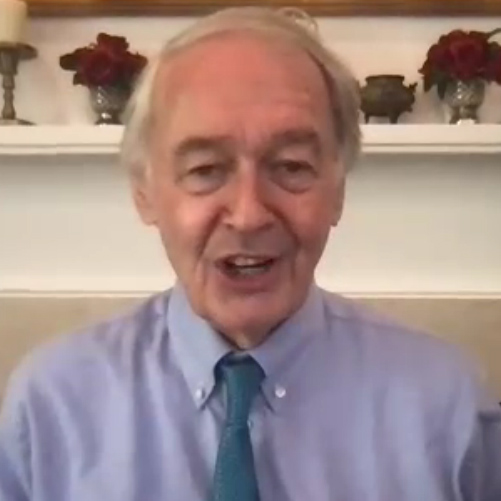EPA on April 24 announced nearly $1 billion in grants from the Inflation Reduction Act to help cities, states, territories and school districts trade in their older, diesel-burning heavy-duty trucks and buses for new zero-emission vehicles.
The $932 million competitive funding opportunity for the 2024 Clean Heavy-Duty Vehicles Grants Program is aimed at covering part of the cost of a range of Class 6 and 7 HDVs, as well as charging equipment and workforce training programs.
Class 6 vehicles (19,501 to 26,000 pounds) include school buses; bucket trucks, such as cherry pickers; and different kinds of delivery vehicles, referred to as step vans and box trucks. Class 7 vehicles (26,001 to 33,000 pounds) include transit buses, garbage trucks and street sweepers.
According to EPA, more than 3 million Class 6 and 7 HDVs are on the roads in the U.S. Transportation accounts for 29% of U.S. greenhouse gas emissions, and medium- and heavy-duty trucks make up 23% of that total, according to the agency.
The “historic” funding will help “ensure every community can breathe clean air,” EPA Administrator Michael Regan said in a statement. The IRA dollars also could advance U.S. competitiveness in international markets, Regan said, securing “our nation’s position as a global leader in clean technologies that address the impacts of climate change.”
Sue Gander, director of the World Resources Institute’s Electric School Bus Program, hailed the new funding as “a game changer for communities across the country that want to transition to clean buses and trucks — and breathe cleaner air — but don’t have the means to do so. …
“Heavy-duty vehicles emit huge amounts of air pollution that harm the health and wellbeing of our children and communities. Historically underserved communities living near depots, ports and highways are often more exposed to pollution from these vehicles, underscoring the equity benefits of this program,” Gander said in a statement on the WRI website.
According to the funding announcement, EPA expects to award approximately 40 to 160 grants, ranging from $500,000 to $60 million per award. The deadline for applications is July 25, with awards announced and finalized by the end of the year.
The awards will be split between two subprograms, with 70% of total funds going to school buses and 30% for “vocational vehicles,” which include other types of Class 6 and 7 HDVs.
Other carveouts require that $400,000 of the grants be awarded in “nonattainment” regions that do not meet national air quality standards, and at least 15 grants go to tribal groups and territories.
States, territories, cities, public school districts, tribal governments and nonprofit school transportation associations are eligible for the funds.
Cost shares for the grants will depend on the type of HDV and whether it is a battery-electric or hydrogen fuel cell vehicle. The lowest cost share is 33% for an electric transit bus, and the highest is 80% for a range of hydrogen fuel cell Class 6 vehicles.
EPA’s top priority for replacements are diesel-powered HDVs from model year 2010 or earlier, but other HDVs with internal combustion engines and from model years 2011 and after also may be eligible. The new electric or fuel cell HDVs should be from model year 2023 or later.
Awards can also be used to cover behind-the-meter charging infrastructure — from Level 2 chargers and battery storage units to new electric panels and meters — but not transformers.
Clean Freight Strategy
The HDV grant program was one of a series of April 24 funding announcements from the Biden administration to promote a new initiative aimed at setting a national goal for the U.S. to develop a zero-emissions freight strategy, covering trucks, rail, aviation and marine vehicles.
The administration has committed to working with other countries to build clean HDV markets in which 30% of new medium- and heavy-duty vehicle sales will be zero-emission by 2030 and 100% by 2040, according to a White House fact sheet.
The Department of Transportation announced $148 million for 16 grants to 11 states and Puerto Rico “to improve air quality and reduce pollution for truck drivers, port workers and families that live in communities surrounding ports.”
The grants are the first round of the department’s $400 million Reduction of Truck Emissions at Port Facilities Grant Program, created by the Infrastructure Investment and Jobs Act.
For example, Georgia is receiving $15.3 million to build a large-scale charging project near the Port of Savannah, which will allow the replacement of diesel-powered trucks and expand the use of other low- and zero-emission equipment at the port.
“When truckers spend hours idling at ports, it’s bad for drivers, bad for supply chains and bad for nearby communities that feel the brunt of more polluted air,” Transportation Secretary Pete Buttigieg said in a statement. “The investments we are announcing … will save truck drivers time and money and help ports reduce congestion and emissions, while making the air more breathable for workers and communities.”
According to the White House, the Department of Energy is also putting up $72 million for a “SuperTruck: Charged” program to demonstrate how vehicle-to-grid integration at depots and truck stops will “provide affordable, reliable charging while increasing grid resiliency.”
